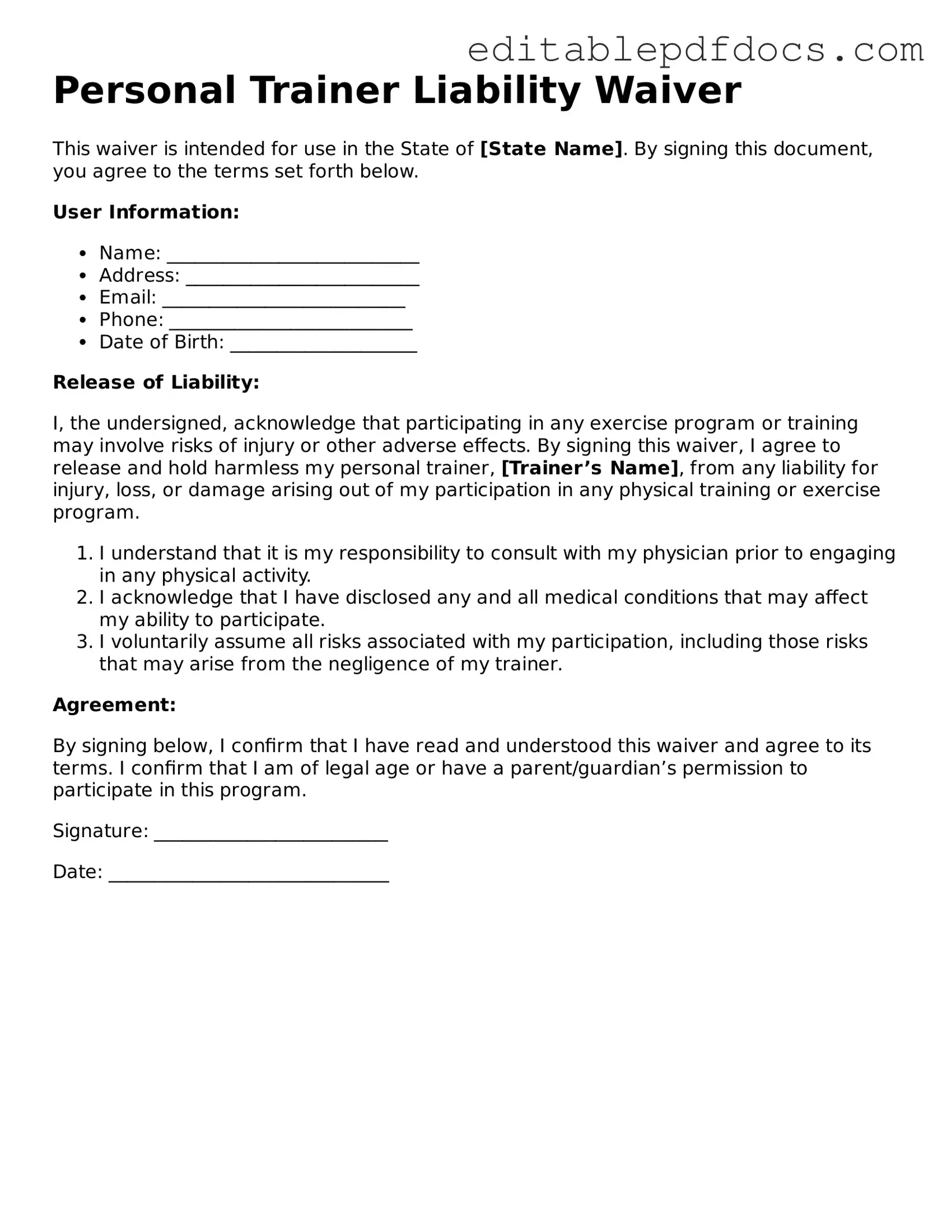When individuals fill out a Personal Trainer Liability Waiver form, several common mistakes can lead to confusion or potential legal issues. One frequent error is failing to read the entire document thoroughly. Many people rush through the waiver, missing critical sections that outline their rights and responsibilities. Understanding the terms is essential for making informed decisions.
Another mistake is neglecting to provide accurate personal information. Incomplete or incorrect details can hinder the waiver's effectiveness. If an injury occurs, the lack of proper identification may complicate the process of addressing the issue.
Some individuals overlook the importance of signing and dating the waiver. A signature signifies acceptance of the terms, and without it, the waiver may be deemed invalid. Additionally, failing to date the form can create ambiguity about when the agreement was made.
People often forget to ask questions about the waiver's contents. If any part of the document is unclear, it is crucial to seek clarification. Ignoring this step can lead to misunderstandings about the risks involved in personal training.
Another common oversight is not discussing the waiver with a legal advisor. While it may seem unnecessary, consulting a lawyer can provide valuable insights and ensure that the individual fully understands the implications of signing the document.
Some individuals may also fail to consider the scope of the waiver. They might not realize that signing the form could limit their ability to seek compensation for certain injuries. Understanding the extent of the waiver is vital for making informed choices.
Another mistake is assuming that the waiver covers all potential risks. People often overlook specific activities or conditions that may not be included in the waiver. It is important to identify and discuss these potential gaps with the personal trainer.
Many individuals do not keep a copy of the signed waiver for their records. Having a personal copy can be useful in case any disputes arise in the future. It serves as a reference point for both the individual and the trainer.
Some people may feel pressured to sign the waiver quickly, especially in a busy gym environment. This pressure can lead to hasty decisions without proper consideration of the risks involved. Taking the time to review the document is crucial.
Lastly, individuals sometimes neglect to update their waivers after significant life changes, such as new medical conditions or changes in contact information. Keeping the waiver current ensures that it accurately reflects the individual's situation and reduces the risk of complications.
